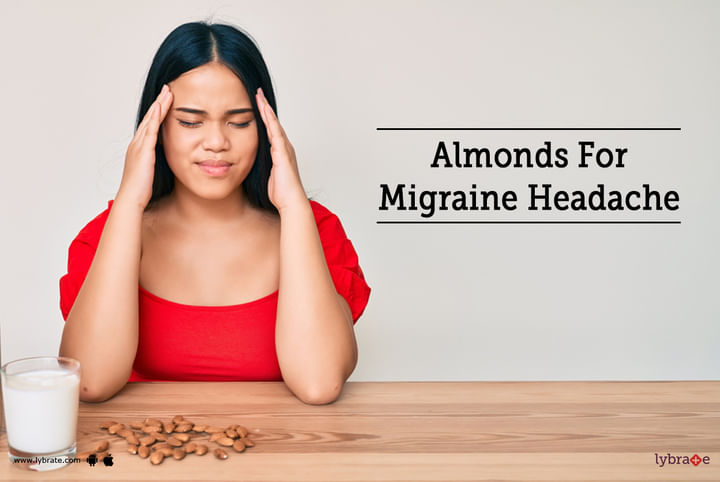Migraine headache
This is a condition in which your headache causes very severe pain or a pulsing only on one side of the head (either left or right). This condition mostly has other problems associated with it such as nausea, extreme sensitivity to sound, light and vomiting. The attack of this condition (migraine) usually lasts for a few hours to a few days (four hours to days) and the person experiences so much pain and it is very severe that the person is not able to do or complete his everyday chore and errands. There can be a warning symptom in some people who suffer from this situation, the symptom is known as aura and the occurrence of this can be before the beginning of the headache or along with headache. This aura is a condition which leads to many other problems such as visual disturbances (like flashes of light or blind spots) and other problems such as tingling effect on one side of your face, arm or leg and you may feel difficulty in speaking.
This condition of migraine can be prevented with the help of certain medications and this makes them a bit less painful. When you have the right medicines, with proper lifestyle changes and home-made remedies can help you overcome this condition.
Symptoms
This is a condition which is affecting all the age groups children, teenager and adults and the symptoms for this progress through different stages
-
Prodrome:
Before the start of the migraine you might notice some changes (one or two days before the migraine starts) and these changes can be :
-
Frequent yawning
-
Mood changes, from depression to euphoria
-
Increased urination
-
Food cravings
-
Stiffness in the neck
-
Aura:
This can be experienced by a person either having a migraine or even before that. They are a reversible condition occurring in the nervous system, they are usually associated with visual problems but can sometimes lead to other problems as well. These symptoms usually last for an hour but they become intense with the passing of each minute.
-
Attack:
If your migraine is left untreated then it would last for a time period of 4-72 hours. The number of occurrences varies from person to person like it can happen rarely or can be happening several times a month. There can be Certain events during migraine such as:
-
Mostly you feel pain on the either sides of your face and rarely in both the sides
-
Pain pulses or throbs
-
Vomiting and nausea
-
Sensitivity to sound, light and rarely to touch and smell
-
Post drome:
You will feel that you are drained, washed out and confused for the rest of the day after the migraine attack. There are certain cases where the patient feels elated too and the pain can return back if the person swings his head.
Causes:
The cause for migraine is not at all completely explained but there are some factors such as genetics and environmental issues which affect it a lot. This can happen because of any kind of change in the brainstem or the terminal nerves getting interacted which is a major pathway. Any huge chemical imbalance in the brain including serotonin (which helps in regulation of pain in the nervous system). Other neurotransmitters also play a huge role in the pain of migraine which includes Calcitonin Gene-Related Peptide (CGRP).
Treatment
There is not any treatment for curing migraine but there are certain medications which help a person suffering from it to prevent further attacks or stop the symptoms as well. The person can take certain medications such as pain relieving medicines also known as abortive or acute treatment which helps in stopping the symptoms from occurring any further. If a person experiences a very severe or frequent migraine and has to take drugs or medications regularly, such medications are known as preventive medications.
Almonds
- Almonds are known for their natural qualities of preventing a person from getting a migraine headache. This does not have any kind of side effects associated with itself. Almonds are very rich in so many healthy fats and Vitamin E as well, they also have high amounts of magnesium in them. As it is suggested by doctors to take 400-500 milligrams of magnesium oxide daily which prevents the person from any kind of migraine headache, and almonds being rich in magnesium fulfills the demand that is required by a person. Theoretically one ounce of almond produces about 80 milligrams of magnesium.
- Almonds also contain a fair amount of vitamin B12 (riboflavin) which also helps in decreasing the frequency of the migraine headache which means the pain of the headache becomes less severe and its continued consumption can sometimes lead to the disappearance of the headache as well.
- Almonds will surely help and prevent you from the severe pain of the migraine headache as it has a very relaxing effect on the blood vessels. You can just have a handful of almonds, as it is or you can roast them and top it with honey or along with something you would love to eat it with, next time you have a headache.
- Eating about 10-15 almonds per day would surely keep you away from any kind of migraine headache. Eating about 10-12 almonds has an effect which is equivalent to an aspirin and can help in relieving pain of the migraine headache.
- Almonds are known to be helpful for other health related issues as well, apart from migraine headaches it can help you have a better sleep and is very helpful in protecting your heart.
- Almonds are not at all suggested to those people who are very sensitive to almonds and nuts. As almonds contain tyramine which can act as a migraine trigger for people who are sensitive to either almond, nuts or tyramine.


+1.svg)
